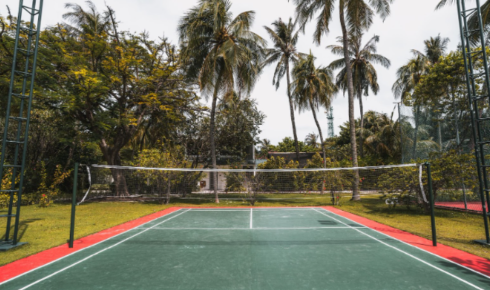Best Surface Materials for Building a Long-Lasting Badminton Court

Badminton is one of the fastest-paced racquet sports in the world, demanding speed, agility, and precision from its players. As such, the choice of badminton court flooring materials plays a critical role not just in player performance but also in the longevity and maintenance of the court itself. Whether for a professional indoor facility or an outdoor recreational setup, selecting the best surface for a badminton court ensures long-term value, safety, and playability.
Why Surface Materials Matter in Badminton Court Construction
Unlike many other sports, badminton requires rapid footwork, quick lateral movements, and sudden directional changes. An ideal surface must offer strong grip, shock absorption, and a consistent bounce. If the flooring is too hard, it increases the risk of injuries. If it’s too soft or slippery, it reduces stability and game performance.
Additionally, flooring for both indoor and outdoor settings must be durable, easy to maintain, and capable of withstanding heavy use. That’s why identifying the most durable badminton court material is crucial during the planning phase.
Synthetic Acrylic Flooring: A Versatile, Long-Lasting Choice
One of the most preferred choices for both indoor and outdoor badminton court surfaces in India is synthetic acrylic flooring. This system involves multiple layers of acrylic-based coatings applied over a concrete or asphalt base. The result is a smooth, cushioned, non-slip surface that’s ideal for all skill levels.
Synthetic flooring for badminton court construction offers several advantages. It resists wear and tear even with frequent play, requires minimal upkeep, and maintains vibrant color over time. Acrylic surfaces are also UV-resistant and weatherproof, making them ideal for Indian outdoor environments where heat, dust, and monsoons can damage inferior materials.
For indoor settings, cushioned variants of acrylic systems are also available, reducing joint stress and improving player comfort. These floors can be tailored for speed and grip based on user needs, offering high performance across professional, school, and recreational facilities.
Wooden Flooring: Traditional but High Maintenance
Wooden flooring has long been used for indoor badminton court flooring India, especially in tournament venues and premium clubs. It provides excellent bounce and is gentle on players’ joints. Typically, hardwood like maple or teak is used, layered over a shock-absorbing understructure.
However, wooden floors come with a significant downside—maintenance. They are prone to warping due to moisture, require regular polishing, and are not suitable for outdoor installations. Though aesthetically pleasing and favored by elite players, they are costly to install and maintain, limiting their use to indoor environments only.
PVC and Vinyl Flooring: Economical but Less Durable
PVC (polyvinyl chloride) and vinyl surfaces are commonly seen in budget badminton court projects. These surfaces are pre-fabricated mats that can be laid quickly over existing subfloors. They offer decent grip and moderate cushioning, making them suitable for casual play or temporary courts.
While they are economical and easy to install, these materials tend to wear out faster, especially under heavy use. They may require frequent replacement and don’t perform well in harsh climates, limiting their lifespan. For long-term investments, especially in academies or clubs, they might not be the most long-lasting badminton court surface option.
Concrete Base with Coating: Affordable but Incomplete Alone
Many outdoor court flooring in India are constructed with a basic concrete surface due to its affordability and durability. However, concrete alone does not provide the necessary shock absorption or grip needed for badminton. Without an added surface treatment, players are at risk of injuries due to the surface’s hardness and slipperiness.
That’s why it’s common to apply a synthetic acrylic or polyurethane coating over the concrete base. This not only enhances performance but also transforms it into a non-slip badminton court flooring solution suitable for continuous use.
Factors to Consider Before Choosing Badminton Court Surface
Before finalizing the material, consider the following:
- Usage frequency: High-traffic courts need more durable, easy-to-maintain surfaces.
- Indoor or outdoor setting: UV resistance and water drainage matter more outdoors.
- Budget: While synthetic surfaces have a higher upfront cost, they save on long-term maintenance.
- Player comfort: Cushioning and joint protection are essential for professional and school-level courts.
- Slip resistance: Ensures player safety during fast-paced gameplay.
Conclusion
When it comes to building a reliable and long-lasting badminton court, choosing the right flooring is non-negotiable. Among the many options available, synthetic flooring for badminton court construction stands out as the most practical and versatile solution. It balances performance, durability, safety, and aesthetics—making it ideal for both indoor and outdoor courts in India.
For institutions, builders, and sports facility developers, investing in high-quality badminton court flooring materials like acrylic ensures reduced maintenance, better player experience, and long-term cost-effectiveness. Whether you’re constructing a private court or a large sports academy, selecting a proven surface material is the first step toward building a court that lasts for years.
